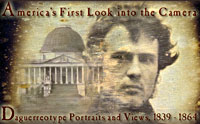Inventing Entertainment: The Early Innovations of the Edison Companies

These materials—early motion pictures from 1891 to 1918, 81 sound recordings from 1913 to 1920, and related materials, such as photographs and original magazine articles—document Thomas Edison's impact on the history of American entertainment. Edison's inventions included the phonograph, the kinetograph motion picture camera, and the kinetoscope motion picture viewer.
Sound recordings are accessible by title and according to six genres: instrumental selections, popular vocals, spoken word, spoken comedy, foreign language and ethnic recordings, and opera and concert recordings. Films are organized by title, chronologically, and according to genres, including actualities (nonfiction films), advertising, animation, drama and adventure, experimental, humorous, trick, and reenactments. Actuality subjects include disasters, expositions, famous people, foreign places, the navy, police and fire departments, railroads, scenic America, sports and leisure, the variety stage, and war. Special pages focus on the life of the inventor and his contribution to motion picture and sound recording technologies.
